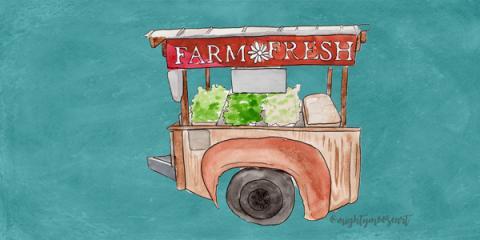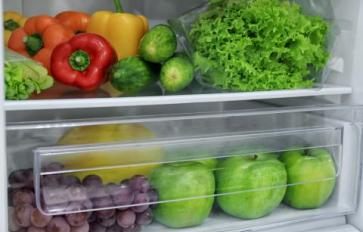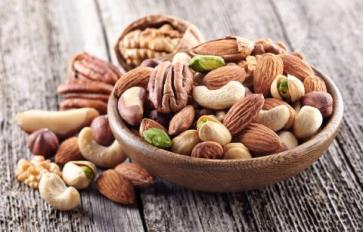
When I lived in Germany, we subscribed to a biweekly delivery of produce from a local farm. It encouraged us to try new produce that we honestly never would have tried otherwise – especially in a foreign country! From the rare (and new to me): Jerusalem artichokes (sunchokes), black salsify, and kohlrabi; to lots and lots and lots of cabbage, carrots, and dill, it’s one of my favorite memories of my time in that country.
I’m back in the USA now, but my cooking repertoire is getting a little, well, stale. I won’t lie: I’m proud I (finally) have a handful of recipes I can easily make, but I’m also kind of bored.
Enter the CSA box delivery.
What is a CSA box?
Community Supported Agriculture (CSA) is a network that connects farmers with the people who want to eat their food; it’s a way for members to get fresh produce directly from local growers. Basically, you purchase a “share” in the farm, and in exchange you receive a bounty from the produce grown on it. With your subscription purchase, you pledge your support for a local farmer – which means you share in the benefits as well as the risks. In other words, you make an investment in the farm with your money, and in return you receive shares of produce based on the farm’s performance. Most often, this takes the form of a regularly scheduled delivery box full of fresh, seasonal, local produce.
How do I find a CSA box near me?
The Internet is your friend. Do a search for “CSA delivery” and the name of your town/area or a larger city near you and see what comes up. You can also check out this site for some listings. If you can’t find one, don’t give up! It’s worth checking with local growers directly (to find those, try your local food co-ops and farmer’s markets) to see if they offer something. It may be they don’t advertise online or they use a different term from CSA (CSA is commonly used in the USA and Canada, but other countries may have different terms for similar programs). If they don’t have a program, they may be willing to set up something similar for you – and even if they’re not willing to now, if enough people ask they might in the future!
If you’re fortunate enough to have more than one CSA in your area, you’ll have to make a decision, and there are a number of things to consider. First and foremost, you’ll want to think about why you’re getting a CSA box. What’s important to you? You’ll encounter a variety of options and derivations from the basic plans, but I’ve outlined for you below some of the things you might consider.
What’s the farm’s philosophy?
If it’s important to you, you can choose a farm that only practices organic or sustainable farming, for example. By joining a CSA, you’re already supporting the local food movement, but feel free to ask the farm if you have specific questions about how the food is grown. It may be that a farm is not officially certified organic (it can be a long and costly process) but actually practices farming that follows the organic guidelines – or nearly.
How much does a CSA delivery cost?
This will vary widely, of course, but a fair range is $15-$50 per delivery, with most in the $20-$30 range, depending on the size and frequency. In addition, there are some other things to consider.
- How long is the required commitment? Some deliveries require a full season’s pledge, while others allow shorter-term commitments, like a month. (It’s really best to commit to a box for at least a month so you can see some variety in the delivery and give yourself a chance to adjust to the influx of fruits and veggies.)
- Is there payment required in full up-front, or is there a payment plan? A lot of deliveries allow you to manage your account online, but you may still have to pay for the full term subscription at once.
- Is there a one-time membership fee or a box deposit? Some farms require you pay a deposit for their produce boxes, which you return each week, and then get your deposit back if you return it when you end your subscription. Others require you to provide your own box/bag from the pickup location, and you can use what you’d like (reusable is better, of course).
- Some deliveries offer a free or discounted box if you can be a pickup location for them. You’ll need the appropriate space, but if it’s something you’re truly interested in, talk to them. Some farms allow members to work on the farm in exchange for deliveries. They may also offer a barter-trade proposal if you have products or other services of your own to provide.
How often is a CSA box delivered?
Most often a CSA delivery is weekly, but some farms allow an every-other-week option. Another thing to consider is whether you have the ability to “pause” the delivery with enough advance notice (if you are on vacation, for example) – some farms ask that you kindly donate your delivery to a local food bank, instead. Relatedly, if you can pause a delivery, how much advance notice does the farm need?
When and where is a CSA box delivered?
In addition to the frequency of the box’s delivery, you’ll want to consider if the box is delivered to your home (some farms offer this in limited areas for an additional fee), neighborhood pickup locations, or a centralized pickup spot, like the farm’s produce stand. If you have to do the picking up – especially from a neighborhood pickup spot, which might be a fellow members house! – there will likely be a window of time each week when you can do so. Make sure this works with your schedule.
What’s in a CSA box?
You can give this one some consideration, but really, it shouldn’t be the most important one – for a couple of reasons. First, you won’t have much control over this. Some farms will set up a self-serve “trade box” at the pickup location, but for the most part, you get what you get, and that’s whatever is in season for your area! I encourage you to consider quantity rather than specific items, if anything – I understand you want to get the most bang for your buck, and some farms indicate subscriptions by weight, but my experience has been that most farms provide vague descriptors like small, large, etc. (If specific size is really important to you, contact the farms personally and ask them what the size of a typical delivery is.) Secondly, you probably shouldn’t join a CSA box if you are looking to get a specific quantity of specific produce each week. Part of the fun of a CSA box is that it encourages you to try new things: you prepare things you wouldn’t normally buy simply because they’re already in your kitchen -- why not give them a try? Furthermore, depending on the farm, there may be an element of “shared risk” in the subscription – meaning that if catastrophic weather were to happen and produce became very limited or nonexistent, you might not get a refund. (This isn’t the case for all – ask if you’re truly concerned about this possibility.) Bonus: a lot of farms provide suggested recipes for using their bounty each week!
Can you add items to the CSA box?
Some farms allow you to add on items each week, for an additional cost – eggs and milk are frequent options, but you’ll also see flowers, meats, grains, essential oils, yarn, nut milks, jams, and more.
Perhaps my original experience with produce delivery was heightened by the fun in figuring out the English/German translation of each item (salsify – that was a fun one to figure out)…nonetheless, I’m excited to get my first CSA delivery box here in California – and I think you’d like it, too. This is the perfect time of year to choose a local farm to support through Community Supported Agriculture, as farms are just starting summer planning/planting in most regions!
Write in below if you have any experience with CSA boxes or think it’s something you’d like to try!








